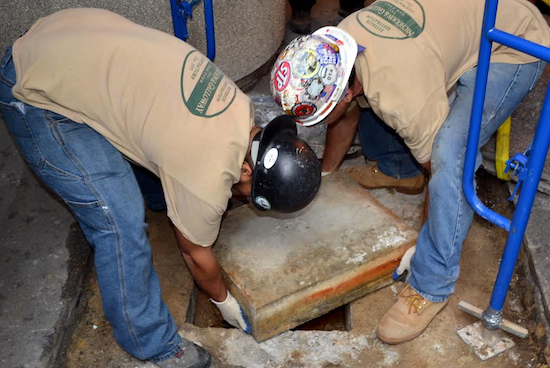Long-buried Jay Street time capsule unveils water-damaged contents

MTA employees dig up a time capsule that was buried beneath 370 Jay Street in 1950.
More than 40 members of the media and dozens of onlookers surrounded MTA officials outside of 370 Jay Street on Wednesday morning as workers dug up and unveiled a time capsule buried beneath the ground in 1950.
“I’m really honored that I’m here and I’m as curious as anyone to see what history has left for us,” said NYC Transit President Carmen Bianco.
